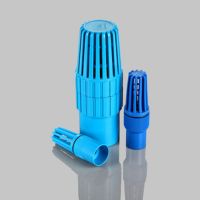What is a Foot Valve(s)?
Foot Valves | A foot valve is a type of check valve that is commonly used in
irrigation systems to prevent the backflow of water. It is typically installed at the bottom of a suction line or pump inlet to maintain the functioning of the irrigation water supply.
How foot Valves Work
Foot valves function similarly to ball check valves, but they have an open end with a shield or screen They keep the suction line between the tank and the pump set primed by preventing oil from returning to the main tank.
Choice of a Foot Valve
Always choose a foot valve that matches the size of the pipe and is compatible or has effect to the fluid flowing in the pipes.
Components you need for a foot Valve Connection
Pipes and Fittings
Ensure you have the appropriate pipe and fittings to connect the foot valve to the suction pipe or pump inlet. The length, diameter and type of pipes & fittings will depend on your setup of foot valve.
Teflon tape or Sealant
For an airtight and secure seal between the pipe threads and fittings
Steps to Connect Foot Valves
- Prepare the suction pipe or pump inlet pipe. If necessary, cut the pipe to a desired length and clean the ends to remove any debris.
- Apply Teflon tape or thread sealant on the male threads of the foot valve.
- Install the foot valve by twisting it on to the pipe or fitting in a clockwise direction. Use wrenches or pliers to firmly tighten it and be careful not to damage it.
- Connect the suction pipe or inlet. Use the appropriate fitting to connect the opposite end of the foot valve to the pump inlet. You also need to apply Teflon tape.
- Ensure all connection or joins are tight.
- Test for any possibility of leaks. Turn on the pump and let it pump water to check for any signs of leaks around the valve.
- If there are leaks, tighten the connection further or reapply the sealant.
Applications of Foot Valves
- Pumping systems and tanks
- Irrigation systems and water supply systems
- Oil transporting pipe systems
- Suction pumps in wells and dams
- Oil rigs in oil mining sites.
Where to Purchase a Foot Valve Fitting
Consult an ideal manufacturer or dealer such as
Aqua Hub Kenya for instructions and information on the foot valve to use on your pump needs. Moreover, you can also ask about the prices, quality, pressure requirements and availability of foot valves and other irrigation pipe fittings.

